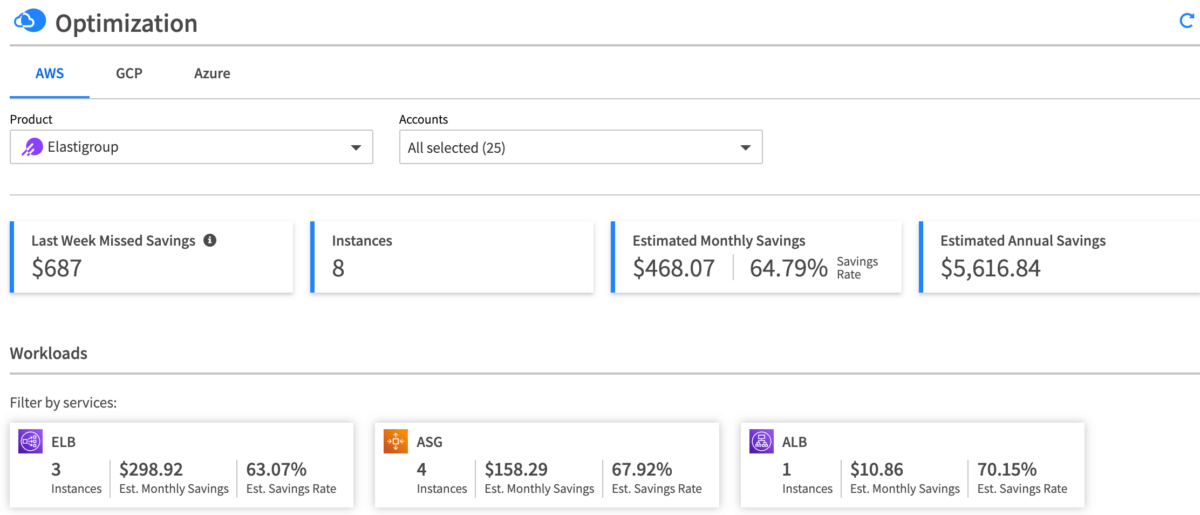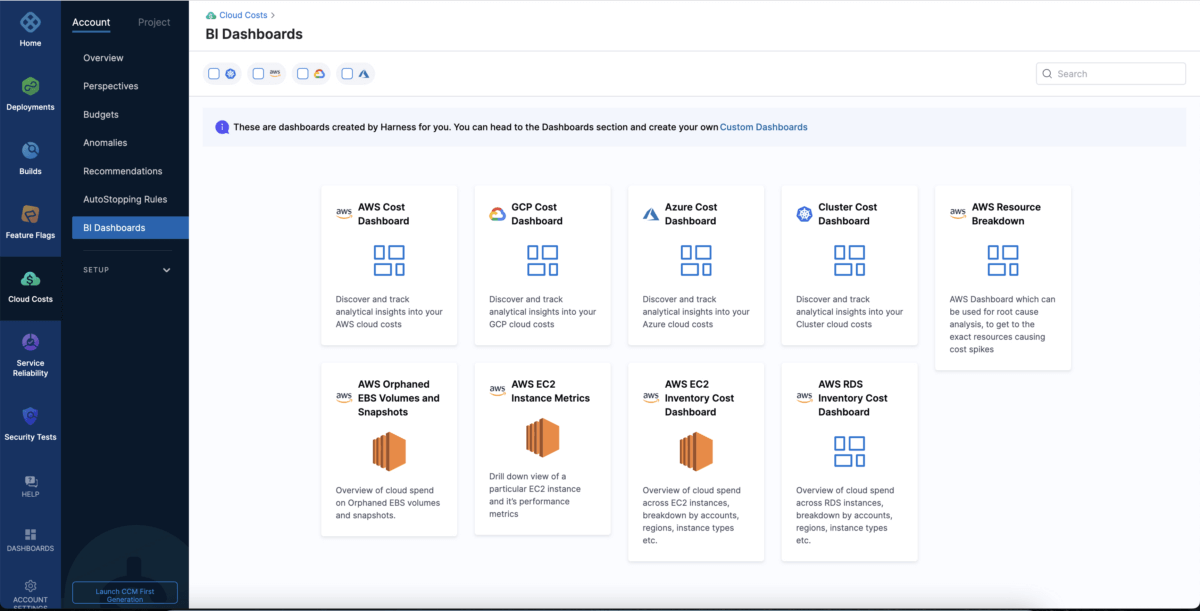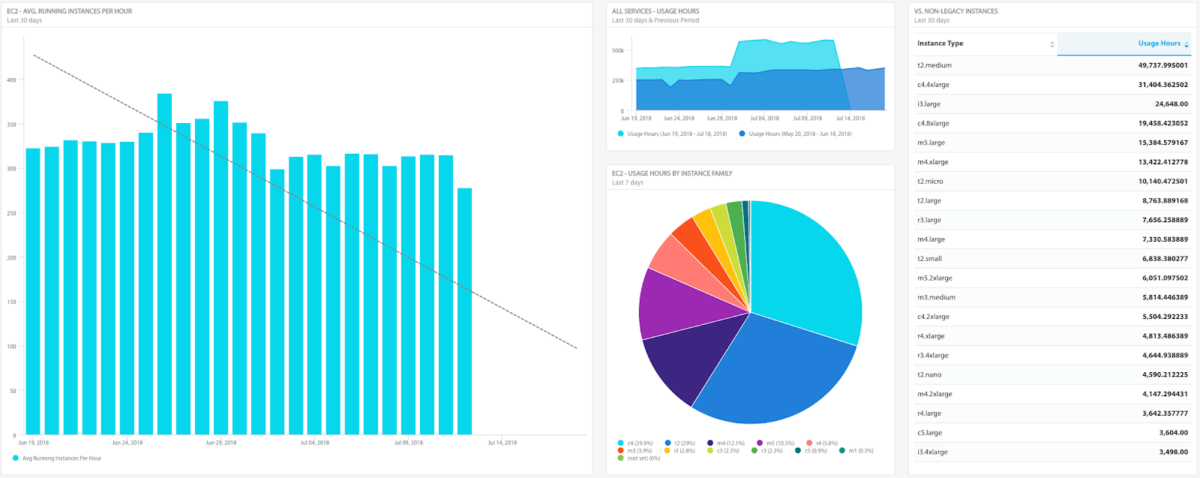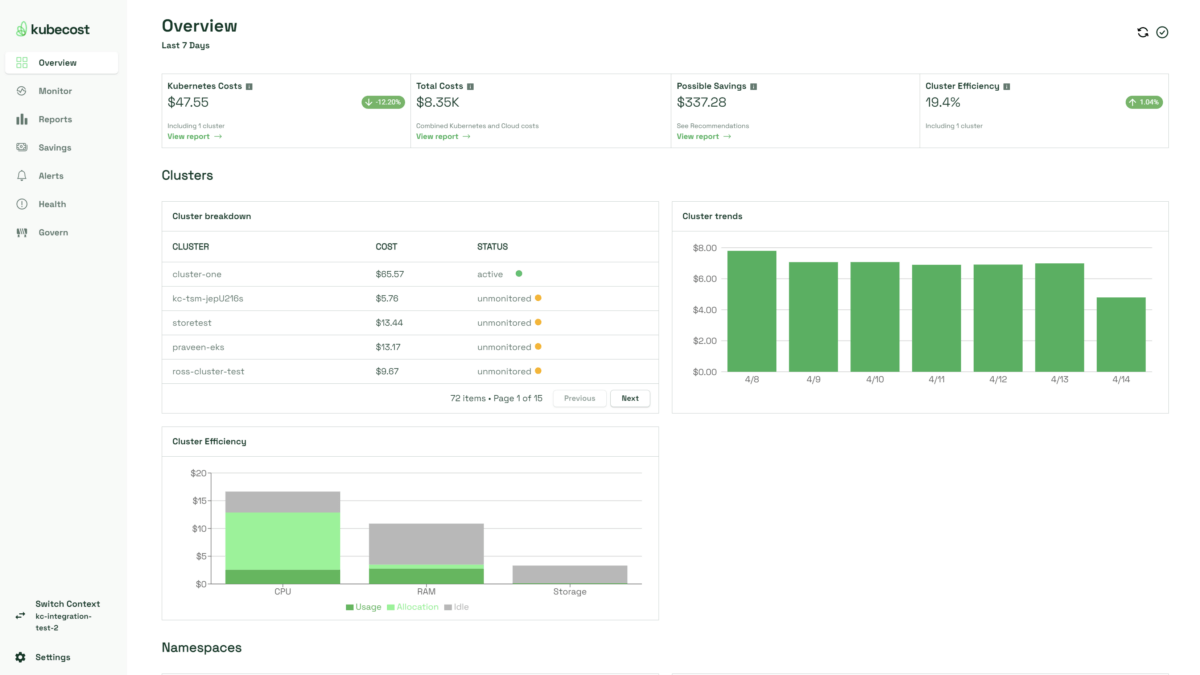Cloud cost management is tricky for many companies, especially when using cloud-native technologies such as microservices, containers, and Kubernetes. Cloud bills tend to bury the information behind rows of text and tables, making it challenging to discover where your money is really going.

That’s why so many organizations are now deploying cloud cost management platforms that let them identify which products and features drive their cloud spend or which customers are causing them to spend more.
Equipped with this type of cost intelligence, your team can make more informed engineering and business decisions in the cloud.
To help you out, we prepared a guide to cloud cost management. Let’s dive in and explore what cloud cost management is all about, why it’s worth your time, and which tools you should consider.
What is cloud cost management?
Cloud cost management aims to minimize costs associated with cloud services while delivering the same level of performance. The term refers to monitoring, measuring, and controlling cloud costs to ensure that you are maximizing your investment in public cloud services.
Traditionally, cloud cost management has focused on waste reduction efforts – for example, eliminating underutilized or forgotten resources and optimizing purchasing decisions (reserved instances and savings plans).
But as companies evolve to adopt next-generation cloud services, cloud cost management focuses on architectural optimization. Teams can build products utilizing cloud services that tightly align with cost and customer utilization with the right architecture.
Added to this is the benefit of automated cloud cost optimization that helps to address.
Benefits of cloud cost management
Managing cloud costs brings your team a host of benefits:
- You get more accurate at forecasting, planning, and budgeting your cloud spend.
- Greater cost visibility empowers your engineers to see the impact of their work on your budget.
- Cloud cost management allows you to discover areas of your solutions that could use rearchitecting for increased profitability.
- Make informed decisions about adjusting your pricing structure and decommissioning resources.
- Benefit from load balancing, autoscaling, capacity reservation, volume discounts, saving programs, and spot instances.
- Identify the best services to use for each application.
Building a cloud cost management strategy
Nearly every company out there has some type of governance in place, with security and compliance as its most important. Why not add a cloud cost management strategy to your governance plan? That way, you will gain more control over your cloud infrastructure and the costs it incurs.
This type of strategy can include the following points:
- Provide a uniform and succinct labeling approach that everyone can use.
- Instructions for setting up monitoring and alerting tools.
- Create a method for evaluating and optimizing costs on an ongoing basis.
Top 6 cloud cost management tools for 2024
Finding the proper cloud cost management tools can be challenging, as multiple vendors offer a wide range of features, cloud pricing models, and use cases. Our team reviewed cloud cost management tools that help you get on top of your cloud spend.
All of the solutions discussed below offer value to teams looking to optimize their cloud bills and streamline cloud cost monitoring and reporting processes. But our review shows that only solutions that go beyond cost monitoring and reporting and offer automated cloud cost optimization can make a real difference.
CAST AI
CAST AI is an autonomous platform for analyzing, monitoring, and optimizing Kubernetes applications. Its core strength is cloud automation which includes features such as rightsizing, instance selection, autoscaling, spot instance use, and resource decommissioning.
CAST AI brings users a host of valuable cost information by splitting cloud costs into project, cluster, namespace, and deployment levels. IT teams can check expenses down to individual microservices and produce a complete estimate. Cost allocation works on a per cluster and per-node basis, which makes it easier to view costs in multi-cloud setups. Exporting cloud cost management data is easy.
Powered by automation, CAST AI chooses optimal resources for application requirements while reducing costs. When a cluster needs extra nodes, the automation engine selects the best-performing instances at the lowest cost and helps teams avoid overprovisioning.
CAST AI also includes a free security report. You can scan your cluster against CIS benchmark, NSA-CISA framework, and other container security best practices to discover vulnerabilities or misconfigurations, and automatically prioritizes them in a few minutes.
Key takeaway: CAST AI automates cloud scaling and optimization, allowing you to achieve significant cost reductions – at least 50%. It continuously looks for the best resource alternatives, ensuring that your apps are always running at peak performance and optimal cost.
See CAST AI in action
End those massive cloud bills! Learn how to cut 50%+ automatically
Pros of CAST AI
- CAST AI is a cloud-native platform for automatically analyzing, monitoring, and optimizing cloud environments.
- It offers a free reporting module that splits cloud costs into project, cluster, namespace, and deployment levels. A team can track expenses down to individual microservices and then produce a complete estimate of cluster costs.
- Cost allocation works on a per cluster and per node basis. The solution also makes it easier for teams to view and allocate costs in multi-cloud setups.
- Powered by AI, the platform chooses optimal resources for your application’s requirements while reducing costs through autoscaling and rightsizing features.
- When a cluster needs extra nodes, the automation engine selects the best-performing instances at the lowest cost. Automating multi-shape cluster formation and rightsizing features helps avoid overprovisioning.
- CAST’s multiple autoscaling options allow users to achieve cost reductions. It generates an optimal number of required pod instances and scales the replica count of your pods up or down. It removes all pods if there is no work to be done.
- CAST AI can also empty nodes to help you avoid paying for resources you don’t use. The solution employs automated bin packing to maximize savings.
Cons of CAST AI
- CAST AI’s monitoring and reporting feature currently focuses on compute costs. However, the team is planning to add more coverage in the near future.
- Works only with Kubernetes (EKS, Kops, AKS, GKE).
Conclusion: CAST AI is perfect for teams looking to reduce their cloud costs without adding any engineer workload. Another good use case for CAST AI is among teams that want to automate the most time-consuming cost optimization tasks such as instance selection, rightsizing, or autoscaling.
Spot by NetApp

Source: Spot by NetApp
Spot by NetApp is a cloud cost management solution that optimizes cloud costs with spot instance automation. The platform automatically gets spot capacity for workloads, helping to cut costs and ensure high availability.
The platform offers a breakdown of costs associated with deploying clusters and provides details on each layer. You can break down expenses into namespaces, individual workloads within every namespace, and filter them further.
For each workload, you get compute and storage costs. You can use this data to analyze your application costs, perform chargebacks without a lot of resource tagging, and estimate future cloud expenses.
Spot by NetApp comes with a handy rightsizing recommendation mechanism that monitors workload utilization in real-time, offering teams recommendations for manually adjusting the resource requirements. This allows for high-level visualization and faster implementation.
The platform basically offers a cloud cost optimization solution that reduces cloud spending by focusing on spot instances rather than other cost reduction opportunities. By identifying workloads in an instance that can be distributed across a cluster, Spot by NetApp triggers a scale-down to drain and terminate the instance. It allows you to run clusters on spot instances without having to provision or scale instances.
Pros of Spot by NetApp
- Spot by NetApp is a cloud cost management tool that optimizes cloud costs thanks to spot instance automation. Spot by NetApp divides the infrastructure costs of clusters and offers insights into each infrastructure layer.
- The tool allows you to break down expenses into namespaces and individual workloads within every namespace, and you can further filter them by layer. For each workload, users get both compute and storage costs. You can use Spot by NetApp data to analyze your application costs, perform chargebacks without extensive resource tagging, estimate future cloud spend, and adjust resources on the fly with recommendations from Spot by NetApp’s cloud cost management platform.
- The tool monitors workload utilization in real-time, offering recommendations for manually adjusting the resource requirements for both per container and workload. This opens the door to easier high-level visualization and quicker implementation without disrupting applications.
- Spot by NetApp checks for unschedulable pods and scales infrastructure up to ensure that all your pods have a place to run.
- Moreover, Spot by NetApp prioritizes downscaling the least utilized nodes and removes them if it’s possible to move all pods running on them.
Cons of Spot by NetApp
- The tool reduces costs by focusing on running workloads on spot instances. This, however, may mean that you miss out on other cost-saving opportunities. Spot by NetApp, for example, offers limited rightsizing options for managing the size of VMs.
Key takeaway: Spot by NetApp reduces cloud costs thanks to its focus on spot instances. The tool suggests mostly running workloads on more spot instances, potentially missing out on other cloud cost optimization opportunities that may generate even more savings.
That’s why teams may benefit more from solutions that offer the same level of automation but for more than just spot instances, ideally capable of automatically analyzing workload requirements and matching them with optimal cloud resources (like CAST AI).
Harness

Source: Harness
Harness cloud cost management is a continuous delivery and integration module that focuses on improving cost transparency, optimization, and governance.
Harness gives you in-depth visibility into your Kubernetes clusters and cloud spend by displaying the utilized, idle, and unallocated resources per workload and cluster. It shows cost information by projects, teams, business units, departments, and more. You can create periodic reports on your crucial cost and usage metrics as well.
Governing cloud usage gets easier with Harness thanks to its custom budgeting, forecasts, and accounts for cost show backs and chargebacks. Harness provides in-depth reporting and practical cloud optimization suggestions. These may involve cluster utilization, rightsizing, autoscaling, and cleaning underutilized or orphaned resources.
Before implementing the recommendations, Harness lets users run a what-if analysis so they can see what impact they would have on your costs. The platform allows you to set budgets and keep track of expense variations, as well as continuously monitor your usage so that alerts are sent when usage diverges from expected levels.
Harness offers various automated cloud cost management and optimization features. For instance, AutoStopping can automatically turn off non-production resources whenever they’re not in use.
Pros of Harness
- Harness is a cloud cost management solution with a continuous delivery and integration module, which features Business Intelligence tools to improve transparency, optimization, and governance over all your cloud expenses.
- The product brings in-depth Kubernetes visibility by displaying the utilized, idle, and unallocated resources per workload and cluster. It shows cost information by projects, teams, business units, departments, and more.
- Furthermore, Harness lets you create periodic reports on the most important cost and usage metrics. Governing cloud costs becomes easier with Harness thanks to the custom budgeting, forecasts, and accounts for cost showbacks and chargebacks.
- Harness helps you manage costs by setting and measuring variance from budgets. It continuously monitors your usage and alerts you when your consumption diverges from the expected levels, allowing you to stay on top of cost and usage across your multiple-cloud resources.
- The platform offers custom, data-driven dashboards that help track resources across every public cloud provider your team uses.
- It also uses spot instances. Harness users can run workloads on orchestrated spot instances without worrying about interruptions; the platform handles this part smoothly.
- Finally, Harness offers automated cloud cost management and optimization features. For example, AutoStopping turns off non-production resources whenever they’re not in use.
- Harness shares cost information about apps, services, and environments without the need for human tagging, reducing the effort teams would invest in this task.
Cons of Harness
- As valuable as Harness’s cost insights are, you still need to implement them manually since the platform doesn’t support fully automated cost optimization. It also lacks important cloud optimization and automation features such as autoscaling and spot instance use.
- The platform offers two different sets of recommendations: performance-optimized and cost-optimized. The first can increase your expenses, while the latter may lead to system performance issues – so it may be a tough choice.
Key takeaway: Harness offers cost insights into your apps, services, and environments without the need for human tagging, reducing the effort teams would need for this task. However, as valuable as this information is, you still need to implement them manually, as the platform doesn’t support full multi-cloud cost optimization. The platform also misses important cloud optimization and automation features such as autoscaling, rightsizing, and spot instance use.
Apptio Cloudability

Source: Cloudability
Cloudability provides helpful financial management tools for monitoring, allocating, and analyzing public cloud costs. Teams can use it to track cloud expenses, make better-informed cloud budget decisions, and automate selected cloud optimization tasks.
Cloudability is, in essence, a cloud monitoring and optimization tool. The solution collects usage data from the last 10 to 30 days and uses its algorithms to create rightsizing suggestions for your resources. Cloudability enables you to create custom dashboards for various products, departments, or roles within your organization. True Cost Explorer makes visual exploration of cloud costs and used data easy.
You can quantify the ROI of spot instances, and other cloud optimization recommendations are available from the solution. As a result, your teams get to create a more consistent budget and baseline for forecasting in the future.
Pros of Cloudability
- Cloudability offers automation in several cloud spend areas. First, teams can set up and schedule daily cleanups of detached EBS volumes.
- The tool automatically shuts down operations during periods of low usage.
- The platform also lets users schedule the scaling of ASGs or the stopping/starting of EC2 and RDS instances, verifying how many resources this will affect.
Cons of Cloudability
- Limited range of automation features.
Key takeaway: While Cloudability offers excellent cloud cost management features and data-rich dashboards, its multi-cloud optimization and automation capabilities are limited by the narrow range of automation offered by the product.
Cloudcheckr
Note: CloudCheckr has been acquired by Net App.
CloudCheckr is a cloud management tool that focuses on reporting, creating recommendations for cost optimization, and creating policy-based automation. The platform started as a cloud security tool, but it was later expanded with cost management, tracking, optimization, and resource inventory solutions.
The platform offers a detailed view of cloud cost allocation data, enabling you to see expenses across resources from all major cloud service providers. Its reports display cloud costs over time in a monthly format, letting your team to interact with the data and improve billing accuracy. Alerts combined with cloud governance will give your team more control and help avoid costly surprises.
Pros of CloudCheckr
- CloudCheckr creates resource purchasing recommendations thanks to predictive analytics. By identifying wasted resources and providing resizing recommendations, the platform helps to reduce costs.
- The solution performs hundreds of checks for idle resources, unused instances, mismatches in reserved instances, and more. However, it generates recommendations only for rightsizing and snapshot cleanups.
- Although CloudCheckr mostly looks at policy-based cloud management, it still delivers some interesting automation features, such as automatically re-allocating, resizing, and modifying reserved instances. Thanks to storing historical data on RI inventory, the tool supports teams in making future purchases.
- CloudCheckr automatically enforces tag-or-terminate policies for better infrastructure control. It also supports users with automated spot instance selection and replacement strategies that can deliver outstanding savings over time.
Cons of CloudCheckr
- Limited automation features that require further engineering effort.
Key takeaway: CloudCheckr is optimal for teams looking to improve their cloud spend and visibility. The platform helps uncover trends and provide recommendations on saving across the organization, teams, or projects. However, due to limited automation features that require further engineering work to implement fully, these changes will not happen overnight.
Kubecost

Source: Kubecost
Kubecost is a cloud cost management tool for Kubernetes clusters. The platform delivers insights into Kubernetes cost allocation, monitoring, and alerts, providing flexible and customizable cost breakdown features. For instance, you can divide costs by namespace, deployment, service, and more indicators across all three major cloud service providers.
Kubescost’s comprehensive resource allocation allows for generating more accurate show backs and chargebacks, streamlining the ongoing cost monitoring. Users can allocate costs to teams, individual applications, products, projects, departments, or environments.
The cloud cost management platform allows linking real-time in-cluster costs (CPU, memory, storage, network, etc.) with out-of-cluster expenses from the cloud services such as tagged RDS instances, BigQuery warehouses, or S3 buckets.
Users get context-aware reports that help to achieve an optimal balance between cost and performance matching their service requirements around the cloud infrastructure.
Pros of Kubecost
- Kubecost offers flexible and customizable cost breakdown features, including the ability to divide costs by namespace, deployment, service, and more indicators across the three major cloud service providers.
- Kubecost’s comprehensive resource allocation allows users to generate more accurate showbacks and chargebacks to help users manage ongoing costs.
- Kubecost shows costs across multiple clusters and multi-cloud environments in a single view or through a single API endpoint.
- The solution enables linking near real-time in-cluster costs (CPU, memory, storage, network) with out-of-cluster expenses from the cloud services – for instance, tagged RDS instances, BigQuery warehouses, or S3 buckets. Users receive context-aware cluster-level reports to find an optimal balance between cost and performance matching their service requirements.
- Kubecost is deployed inside your infrastructure, so there is no need to egress any data to a remote service. You retain and control access to your cloud spend data at all times.
Cons of Kubecost
- Kubecost’s in-depth insights and cost reporting capabilities make it a great tool for teams looking for ways to manage their multi-cloud infrastructure. As it doesn’t include cloud optimization features, you’ll need to implement relevant changes manually. This entails extra charges that don’t automatically guarantee savings.
Key takeaway: Since Kubecost doesn’t include cloud optimization features, you’ll need to implement relevant changes manually. This will incur extra charges and doesn’t automatically guarantee savings.
Zesty

Source: Zesty
Originally built as a storage optimization tool, Zesty has grown to a reserved cloud capacity buy-back solution with an added element of rightsizing.
Using AI and automation, the product promises fast results and reduced reserved capacity management burden for teams using Amazon EC2 Reserved Instances.
Pros of Zesty
- Zesty scans your cloud infrastructure needs in real time and adjusts your RI commitments accordingly.
- The tool collects data on your Amazon EC2 usage patterns to train its prediction model. It simultaneously analyzes the prices of RIs on the marketplace to pick the most suitable deals for your workload’s needs.
- Zesty’s freemium version lets you check potential savings on your EC2 consumption within minutes and without installing additional software.
- The tool provides metrics related to your usage of RIs, including on-demand compute cost, effective EC2 cost, daily compute cost, and more. It also lets you view how your expenses change over time and future projections.
Cons of Zesty
- The platform only supports Amazon EC2 Reserved Instances, so if you use other clouds, you will need additional tools.
- The tool lacks a more comprehensive approach to managing your cloud cost visibility, and control.
Conclusion: While Zesty helps to reduce bills for AWS users, it lacks a more comprehensive approach to managing and reducing your cloud expenses. As a result, it mainly deals with the symptoms instead of solving the root cause once and for all.
Comparison of selected cloud cost management tools
| Feature | CAST AI 🥇 | Kubecost | Spot by NetApp | Harness | Zesty | |
|---|---|---|---|---|---|---|
| Supported platforms | ||||||
| AWS | ||||||
| Google Cloud | ||||||
| Microsoft Azure | ||||||
| Cost allocation and visibility | ||||||
| Detailed cost allocation | ||||||
| Automated cost forecasting | ||||||
| Cost reporting | ||||||
| Cost view across multi cloud | ||||||
| Real-time alerts | ||||||
| Advanced cost monitoring | ||||||
| Cost optimization and automation | ||||||
| Rightsizing | ||||||
| Free recommendations | ||||||
| Automated rightsizing | ||||||
| Autoscaling | ||||||
| Automated pod scaling parameters | ||||||
| Node autoscaling | ||||||
| Cluster scheduling and termination | ||||||
| Automatic bin packing | ||||||
| Spot instance automation | ||||||
Wrap up
Scaling cloud resources is easy – so easy that many teams lose control over their cloud spend. A missed bug or architecture oversight can quickly snowball into a massive bill at the end of the month.
That’s why you need a cloud cost monitoring and optimization toolkit that provides detailed visibility, exhaustive reporting, and – ideally – automated optimization capable of handling the fast-changing requirements of cloud-native applications to generate some serious cost savings.

FAQ
Yes, the three major cloud service providers – AWS, Google Cloud, and Microsoft Azure – provide a range of built-in cost management and reporting tools to help you make sense of your cloud bill. However, native tools often deliver cost data with a delay, sometimes even up to 48 hours. And in the cloud world, this could translate into thousands of dollars lost of a job running without your knowledge.
One of the most significant problems in cloud cost management is the lack of visibility into spending behaviors of the engineering team. The other challenge is closely related – it’s about getting engineers to become more cost-aware and include cost into their decision-making processes. Some businesses may discover hidden expenses because they lack the necessary tools to calculate cloud spending. Furthermore, cloud customers may misinterpret cost statistics and end up paying more than necessary.
Given the irregular nature of supply and demand in cloud computing, cloud cost models tend to be dynamic. Depending on the circumstances, you can choose an auction-based, time-based, or cost-based models. And consider three types of cloud pricing strategies: value-based pricing, fact-based pricing, and market-based pricing.
A cloud cost analysis provides insights into where your cloud budget is going and whether teams are using the provsioned resources efficiently. Producing a meaningful cloud cost analysis may be difficult when the cost of resources used by the same workloads, departments, teams or projects.
1. Begin by taking a snapshot of your cloud costs at a specified period in time (for example, at the end of the month).
2. Next, determine where these charges originate. Assign your cloud spending to teams or departments to identify the primary contributors.
3. Examine your consumption and growth patterns to understand whether these charges are reasonable.
4. Assess your infrastructure to check if there are any abandoned projects, shadow IT initiatives, or underutilized virtual machines.
5. Compare your consumption to resource capacity to determine overprovisioning or underutilization.
6. Develop an optimization strategy based on all of your findings. Get the engineering team’s approval to guarantee that your strategy provides the needed degree of performance.
7. Consider the future. Begin planning how you will obtain additional capacity or delete resources you will no longer require.
8. Estimate your expenses, reserve capacity ahead of time, and negotiate volume savings with the provider.





Leave a reply